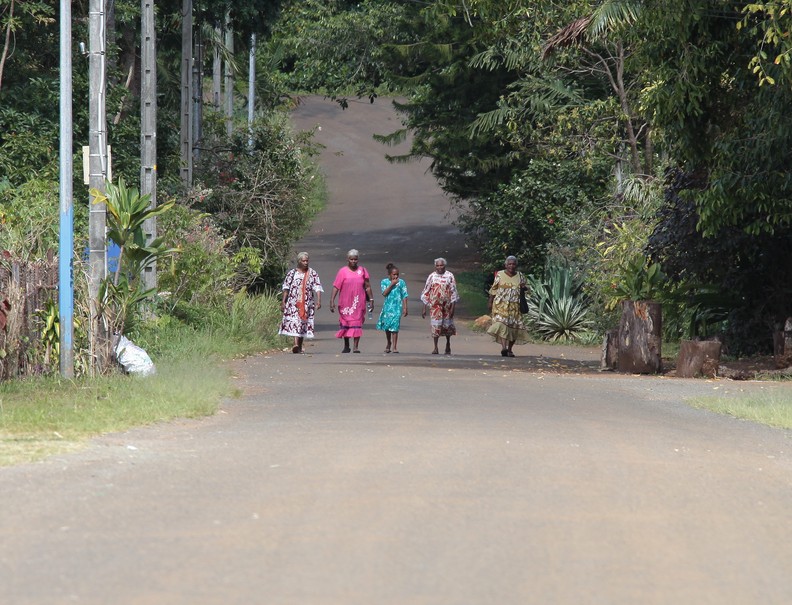FIDELES SE RENDANT A LA MESSE
Ces femmes portent des robes popinées.
La robe mission, robe empire ou robe popinée (Nouvelle-Calédonie) est un vêtement féminin porté dans toute l'Océanie. Il s'agit d'une robe longue et ample sans décolleté mais aux couleurs généralement bariolées. Elle a été imposée par les missionnaires chrétiens venus évangéliser cette partie du monde au XIXe siècle en remplacement des tenues traditionnelles impudiques à leurs yeux. Les océaniennes se sont peu à peu approprié cette robe qui a pris des tons bariolés. Son port est désormais revendiqué et fait office de costume local. Ainsi en Nouvelle-Calédonie les équipes féminines de cricket s'affrontent en robe mission d'une couleur différente pour chaque équipe.
--------------------
A Mother Hubbard dress is a long, wide, loose-fitting gown with long sleeves and a high neck. Intended to cover as much skin as possible, it was introduced by missionaries in Polynesia to "civilise" those whom they considered half-naked savages of the South Seas islands.
Although this Victorian remnant has disappeared elsewhere in the world, it is still worn by Pacific women, who have altered it into a gayer and lighter (less hot) garment, using cotton sheets, often printed in brightly coloured floral patterns.
In Hawai'i, it is called holoku. There, a derivative, the mu'umu'u, is highly similar, but without the yoke and train, and therefore even easier to make.
In Tahiti, the name was 'ahu tua (empire dress, in a sense of colonial empire); now, 'ahu ma-ma- ru-'au (grandmother's dress) is used.
In Samoa and Tonga, the design has taken on a two-piece form, with classic mother hubbard blouses (long, wide, loose-fitting with puffy sleeves) over ankle-length skirts, called "puletasi" and "puletaha," respectively.
In New Caledonia, these dresses are referred to as robes missions (Mission Dresses). New Caledonian women wear these dresses when playing their distinctive style of cricket.
In Papua New Guinea, the form of dress is known as meri blaus, which in Tok Pisin means women's blouse. It is considered formal local attire.
In India and much of South Asia, these dresses are referred to as Housecoats. Indian women wear these dresses as a convenient apparel at home, particularly around only the family members when they are not expecting company.
The author Somerset Maugham refers to this dress many times in his novels and short stories about the Pacific.
